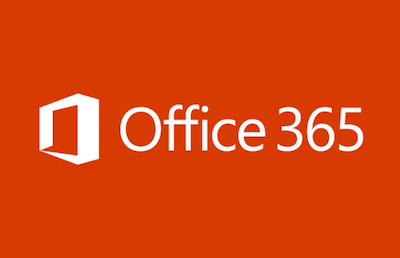A company’s turnover rate is essential to the recruitment process. Talented candidates who notice a company’s high turnover will automatically see a red flag. Negative online reviews will make them think twice about applying or accepting a position. If you aim to seek the best possible candidates, addressing turnover in creative ways will undoubtedly bring short and long-term improvements to your recruitment game. One of those ways is through upgrading your exit interview process.
If a company can gather honest and unexpected feedback, it has the potential to produce lasting results for your recruitment and retention.
Each exit interview will directly affect your company’s reputation. How should an employer improve the employee transition most efficiently and effectively? Start by dissecting your current strategy and incorporating these essential tips:
1. Set Up for Success: Purpose, Outcome, and Process
Preparing for the exit interview is the key to getting valuable results. Use this structure to set a solid foundation:
- Purpose: Spell out the purpose of each interview in a specific way. What does the company wish to take away from the conversation? Think of goals that can play into each question and answer. Part of your objective should be in some way to truly listen and accept feedback, even if you disagree. Another goal could be to end the professional relationship on good terms.
- Outcome: After establishing goals, go a step further and outline specific results you wish to produce from the interview. For example, perhaps you desire to know at least four areas of leadership improvement. When broad goals connect with concrete desired outcomes, the interviewer will be more likely to dive deeper into questions and allow more opportunities for valuable feedback.
- Process: Once you have your vision and concrete objectives, specialise in your approach. Treat each exit as if it is unique. Although you may believe you understand why someone left or which patterns are causing turnover, be careful not to assume and be sure to ask personalised questions. Technical questions are more likely to receive practical answers. For instance, instead of merely asking how one’s supervisor could improve, ask for examples. Ask about specific successful projects and significant failings. Have each department contribute questions to have a well-rounded approach to your organisational growth.
2. Do Everything You Can to Get the Whole Truth
It’s no secret that exiting employees don’t always tell the truth. Perhaps they hope for a reliable reference and do not want to criticise their supervisor or the company in general. Another reality is that exiting employees could be mentally checked out and ready to move on. There are useful methods to work with this issue:
- Choose the interviewer with intention: If your company uses a direct supervisor to interview exiting employees, there’s almost a guarantee the data gathered will not accurately reflect the person’s experience at work. It is critical to choose an interviewer who people trust within the organization. This increases the likelihood of receiving truthful information.
- Set the example: First and foremost, start by being honest. There is no better way to begin an exit interview than by revealing a genuine desire to incorporate the feedback.
- Interview everyone: Yes, everyone. Each will likely have valuable insight to help future turnover. If a company does not interview lower-level employees or those who work in a particular department, it will surely miss out on unexpected and unique feedback.
3. Ensure It Counts
You could conduct the best possible exit interviews, but if you fail to incorporate the information into the company ecosystem, it could be all for nothing. Consider the follow-up, patterns, and incorporation into the bigger picture of retention:
- Follow-up: Most organisations will follow up with management to discuss exit interviews. If you want to make the most of the follow-up, try to be as objective as possible. Think about who in the room may shed light on another viewpoint, and don’t take any criticism personally if you can help it. This approach will maximise the lessons from the data and give a fresh perspective on growing from the feedback.
- Patterns: The point at which crucial data may fall through the cracks is when it’s simplified and coded to fit pre-existing patterns. HR departments may easily overlook rich, qualitative data by codifying the interview into a strictly quantitative output. Much-needed improvement areas may emerge when each answer’s reasoning is at the forefront of the review, even if such reasoning doesn’t fit into a predetermined measure of improvement.
- Incorporation: A short memo with suggested reforms won’t create lasting change in retention. The exit interview should be part of a comprehensive strategy to retain employees and recruit top talent for your organization. Have frequent check-ins with your team on why they stay and what is missing.
Each employee that exits your company will have something to say about their workplace experience. These tools can help your brand uphold a standout reputation and attract the perfect candidates.
About The Author
Gabrielle Ci courel Hanley is an up-and-coming freelance writer with a passion for the sociology of work in the modern age. After working various odd jobs in different industries, she became fascinated with the components of work, bureaucracies, and other types of organisational structures. She received her Bachelor of Science in Sociology at the University of Oregon. With an additional background in communications and multimedia design, she brings creativity and precision to all her projects. Gabrielle resides in Tacoma, Washington in the United States. For more information, email gabi.cicourel.hanley@gmail.com.
courel Hanley is an up-and-coming freelance writer with a passion for the sociology of work in the modern age. After working various odd jobs in different industries, she became fascinated with the components of work, bureaucracies, and other types of organisational structures. She received her Bachelor of Science in Sociology at the University of Oregon. With an additional background in communications and multimedia design, she brings creativity and precision to all her projects. Gabrielle resides in Tacoma, Washington in the United States. For more information, email gabi.cicourel.hanley@gmail.com.









